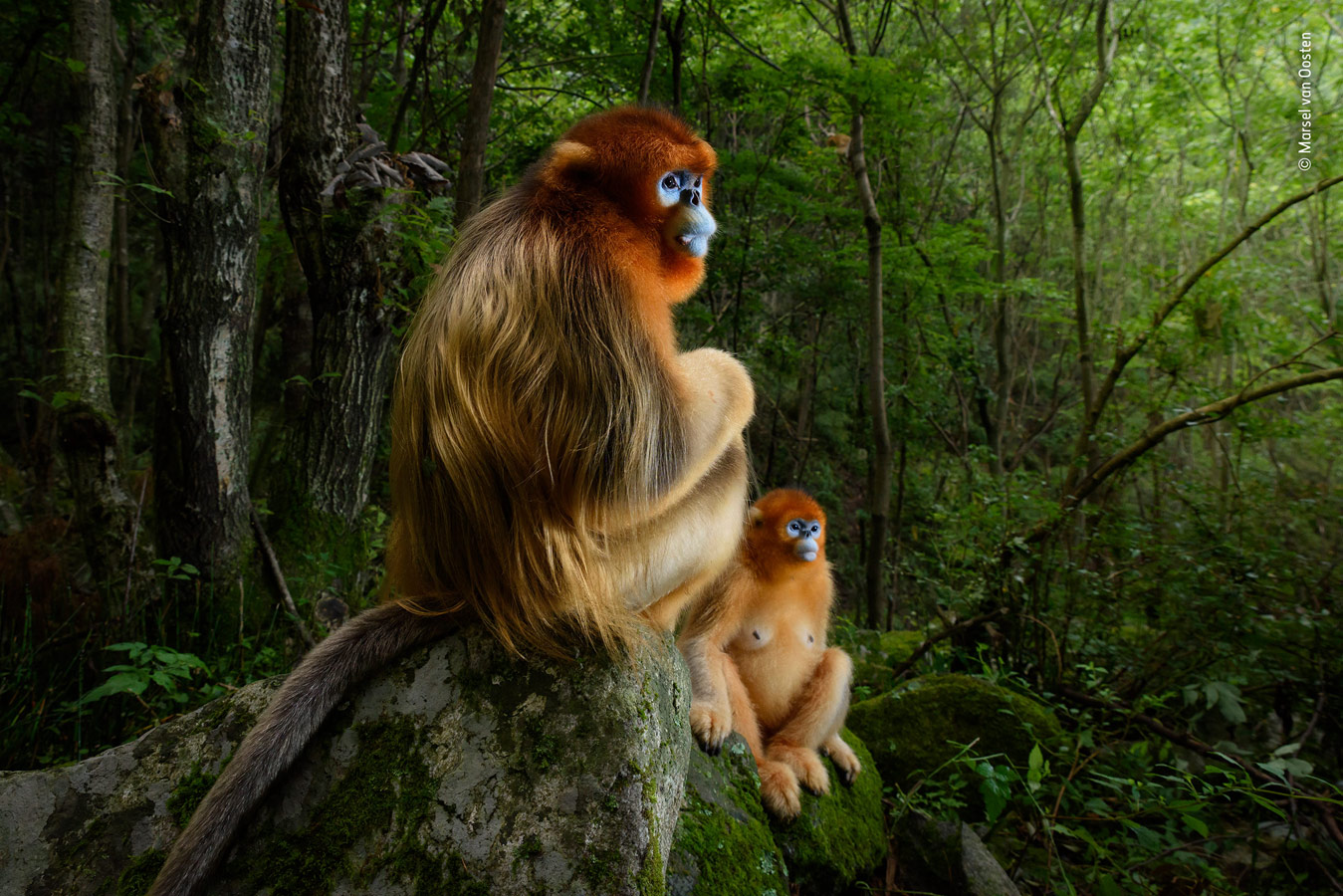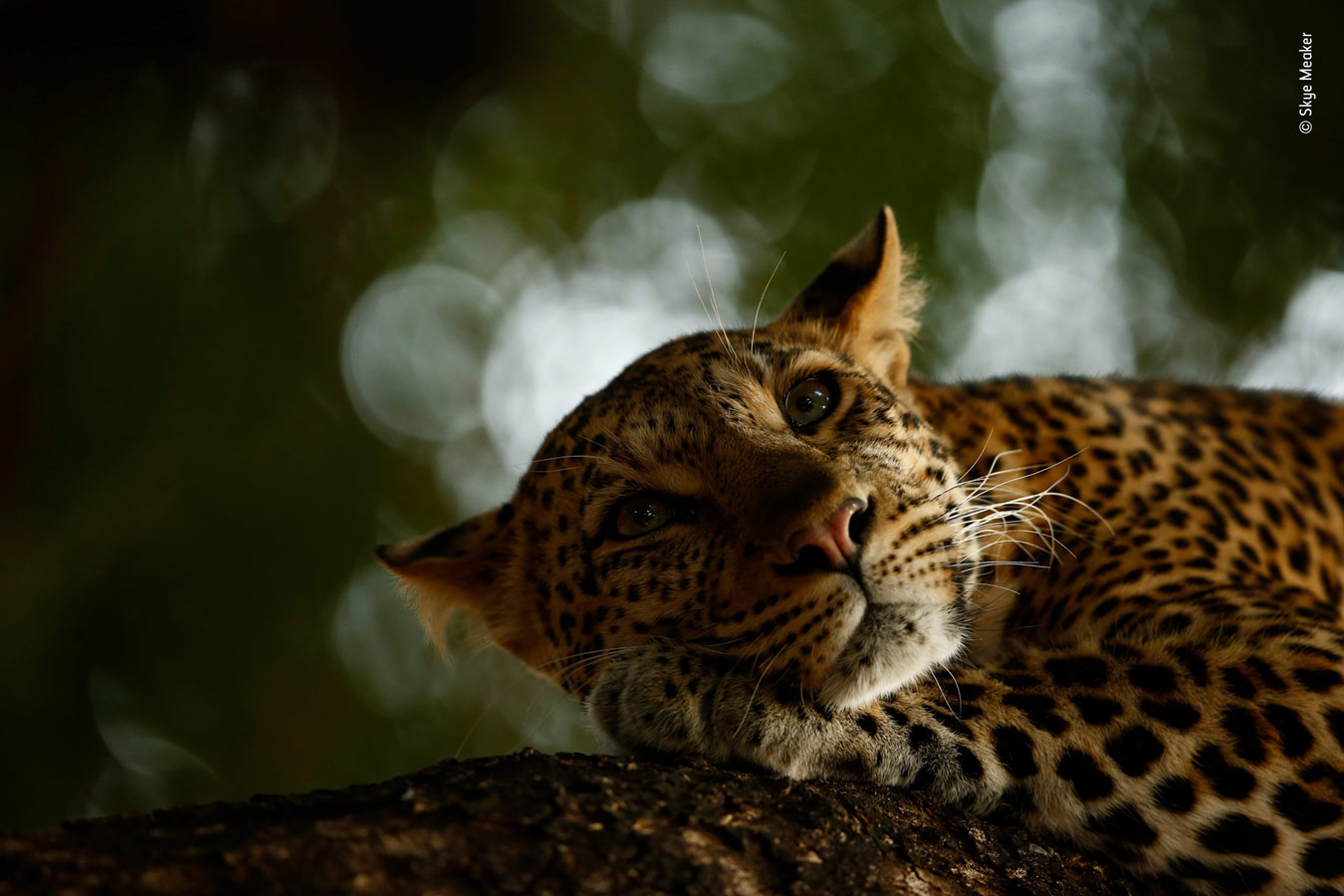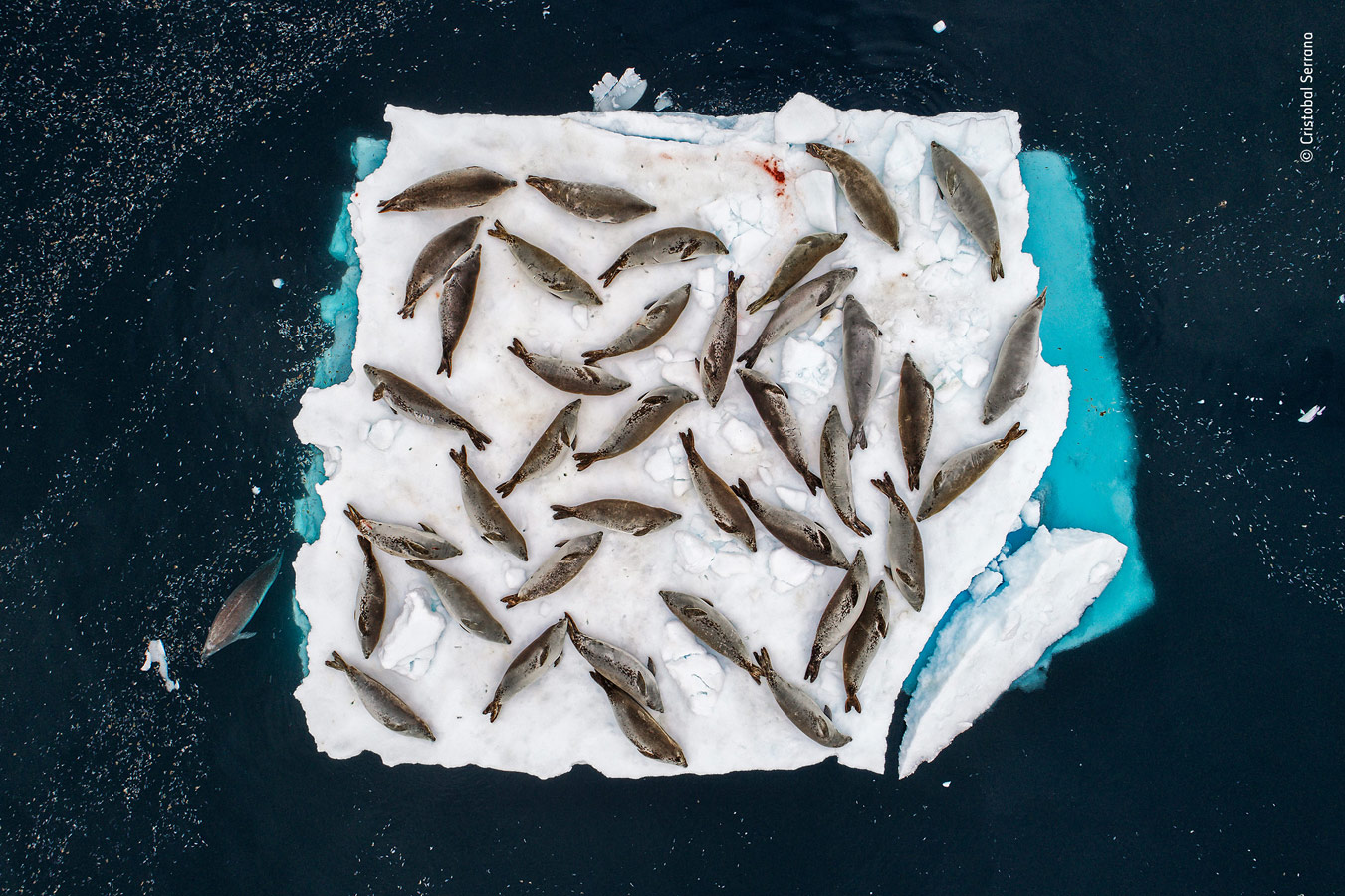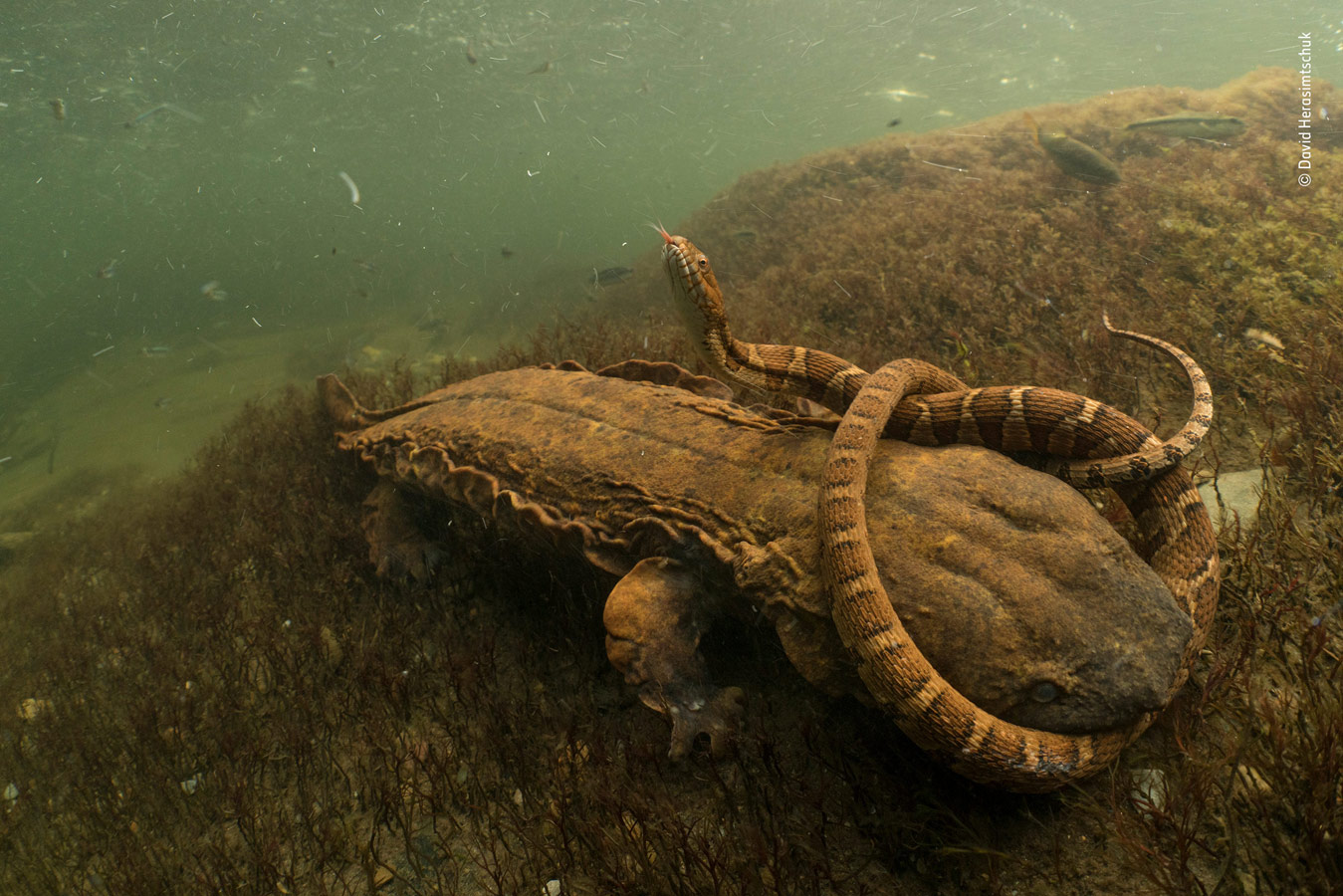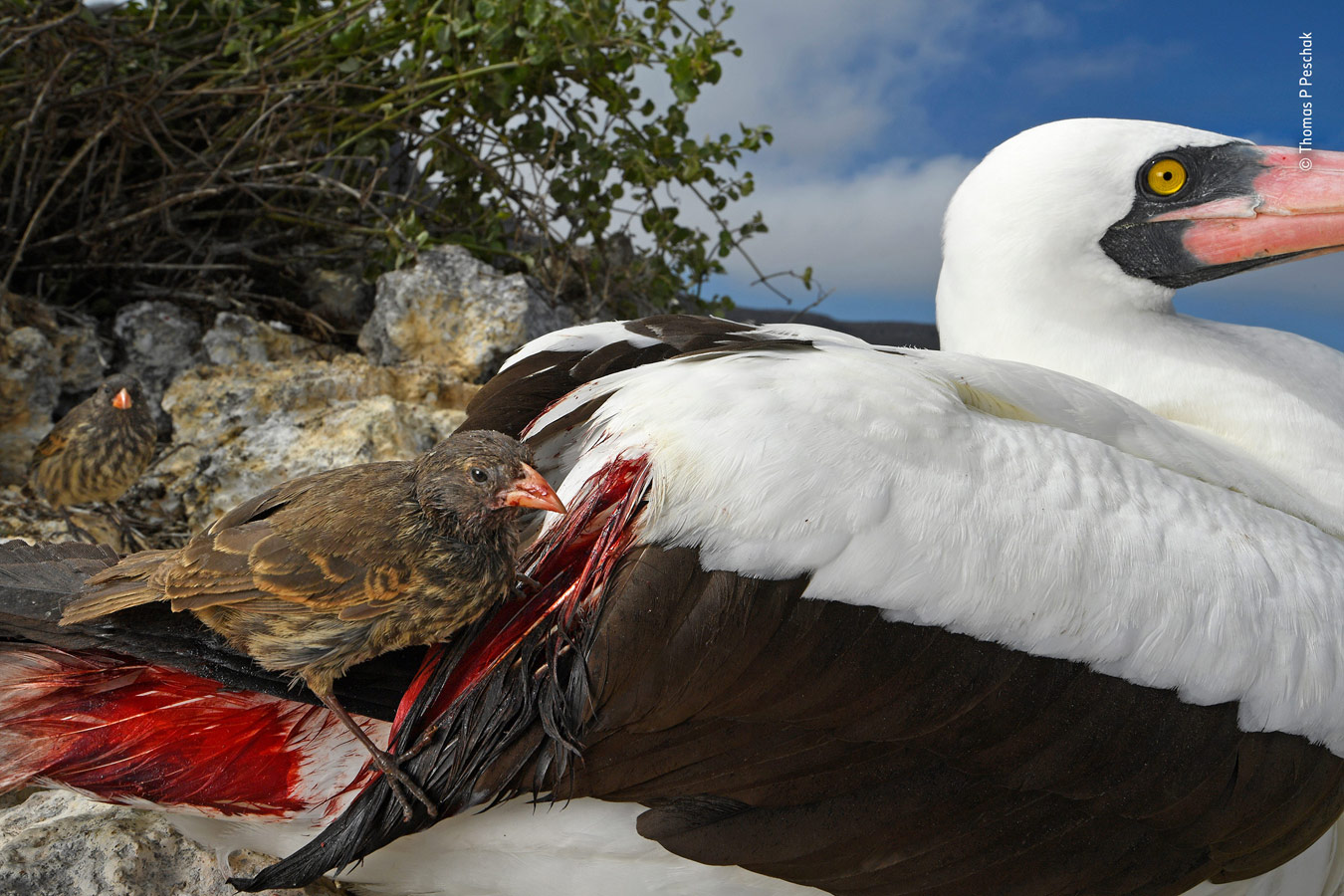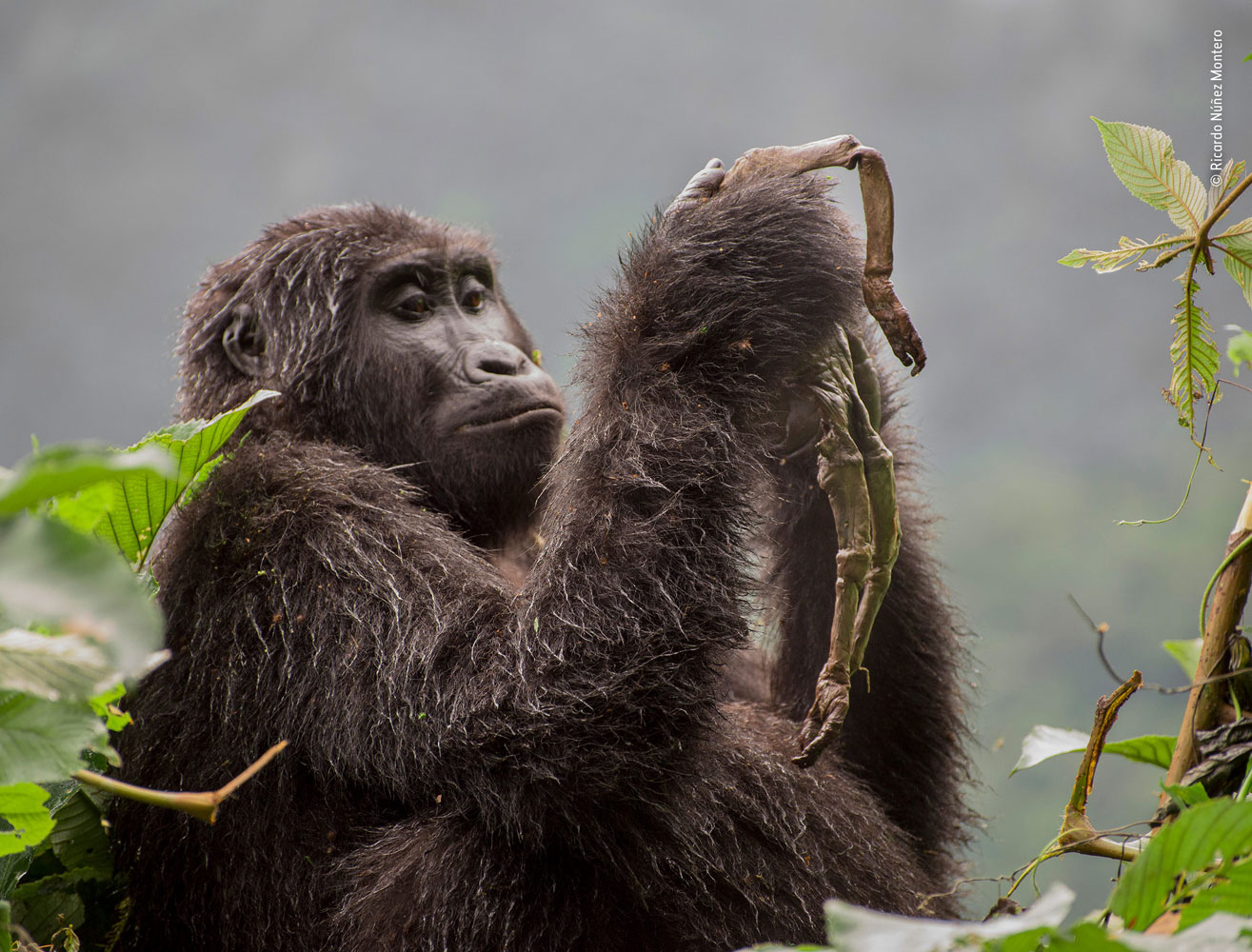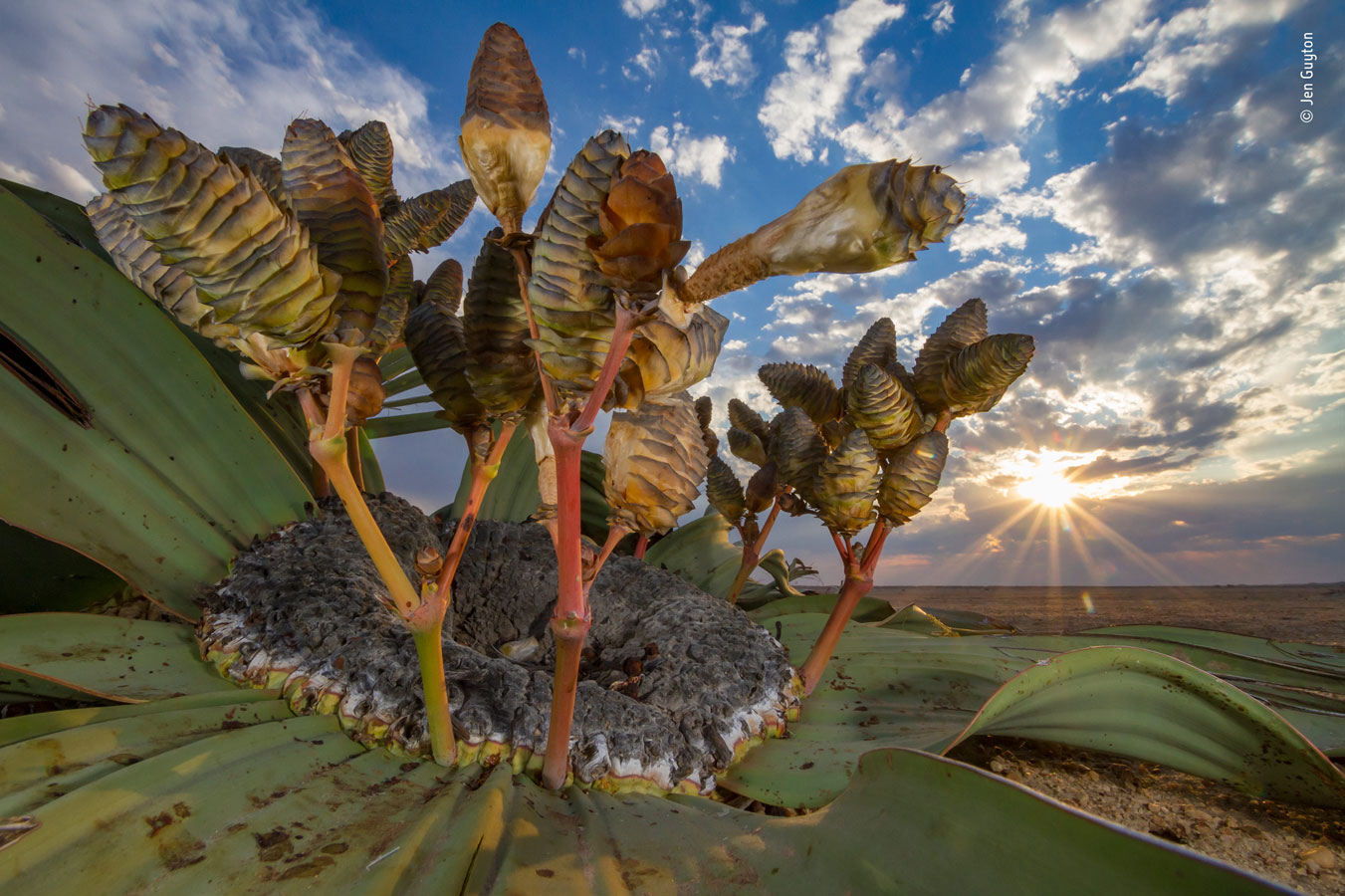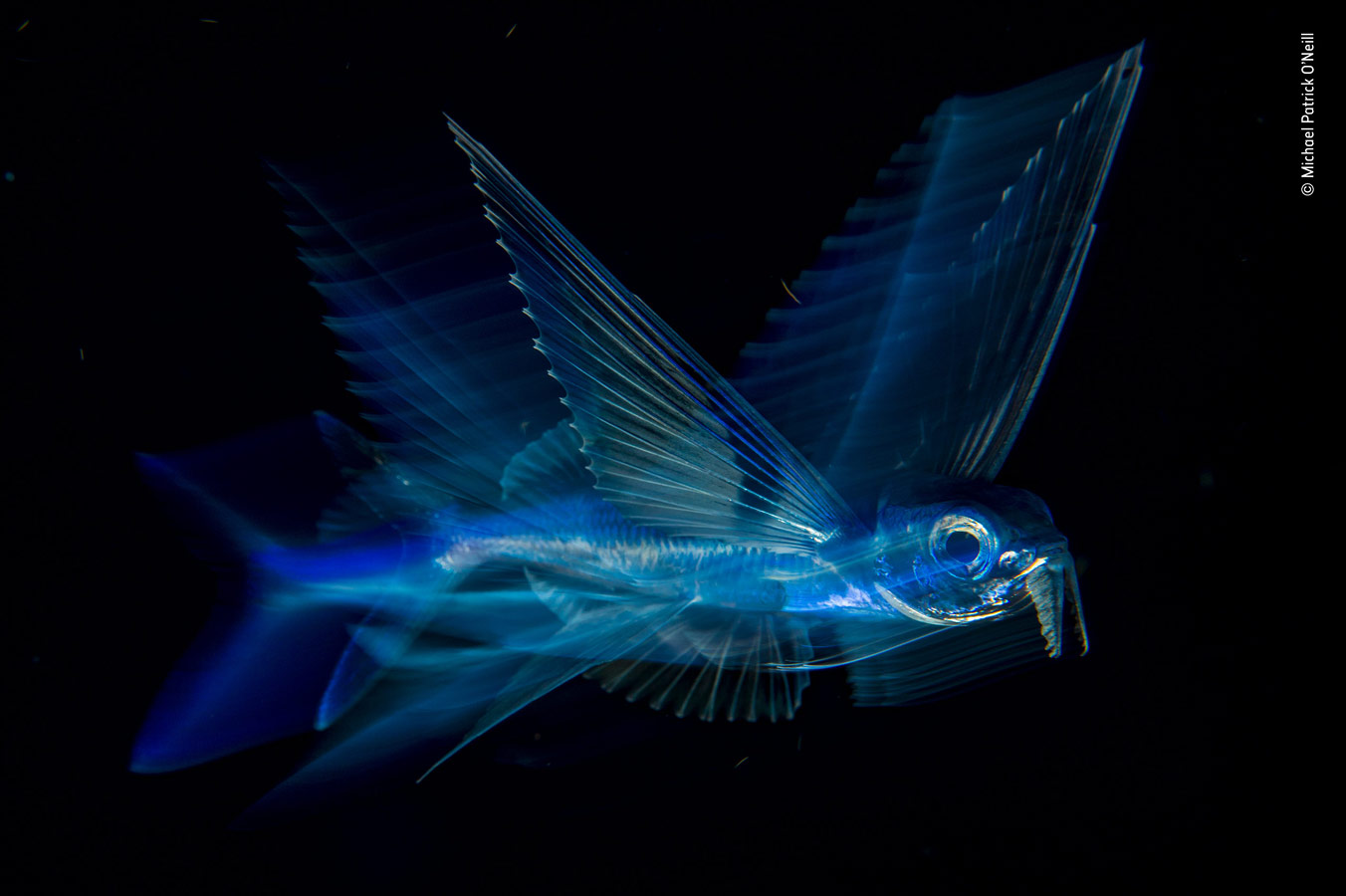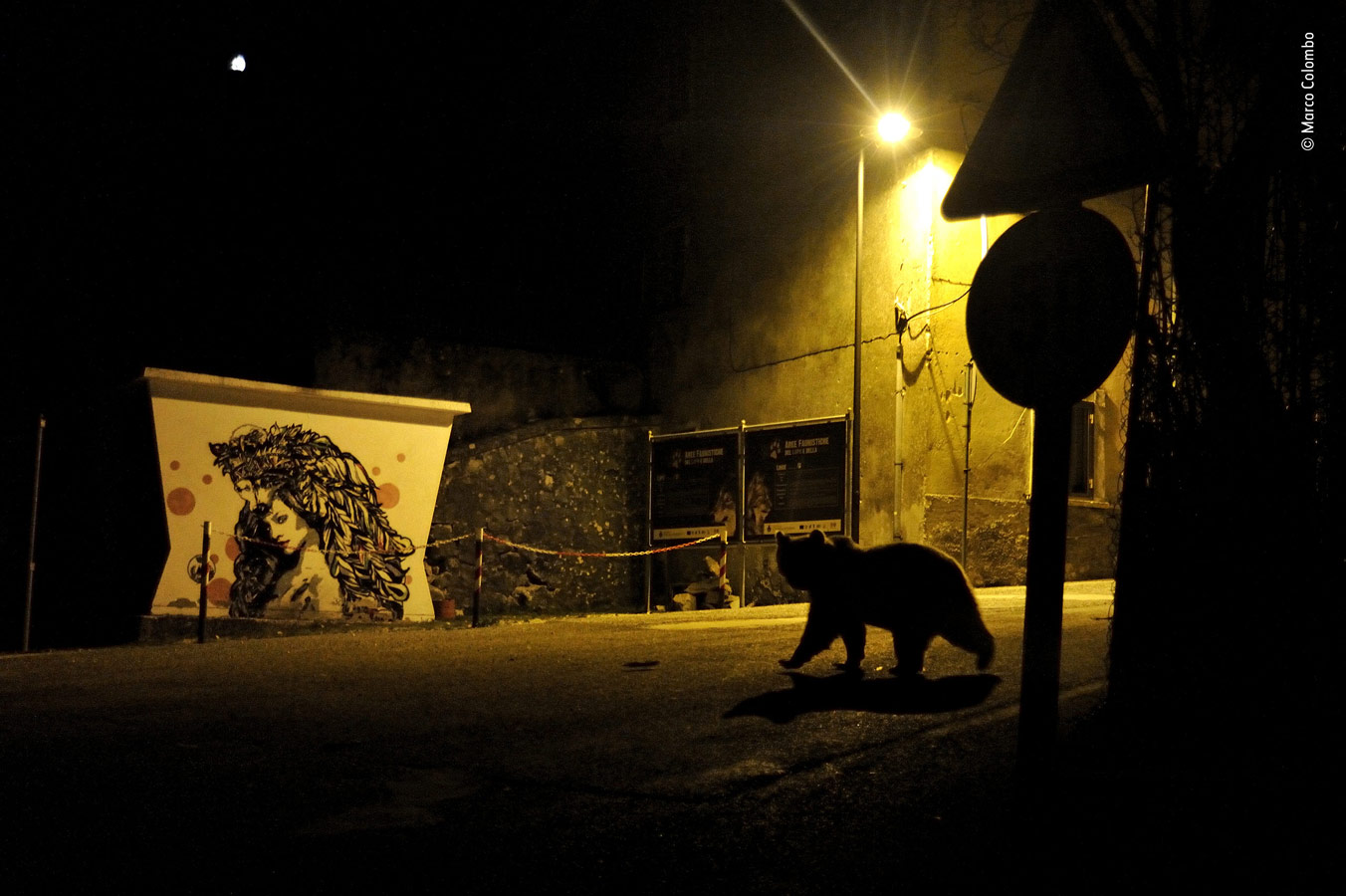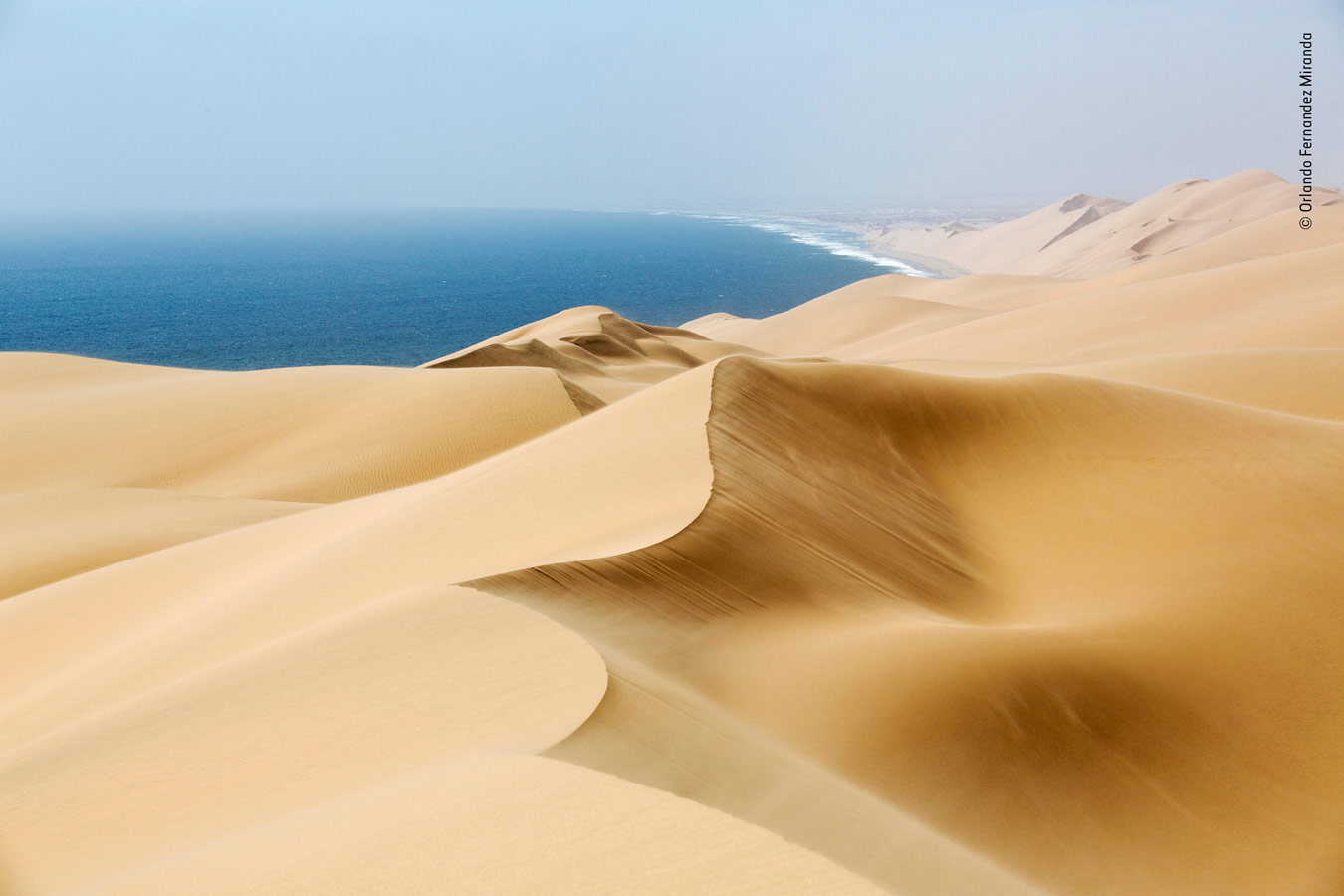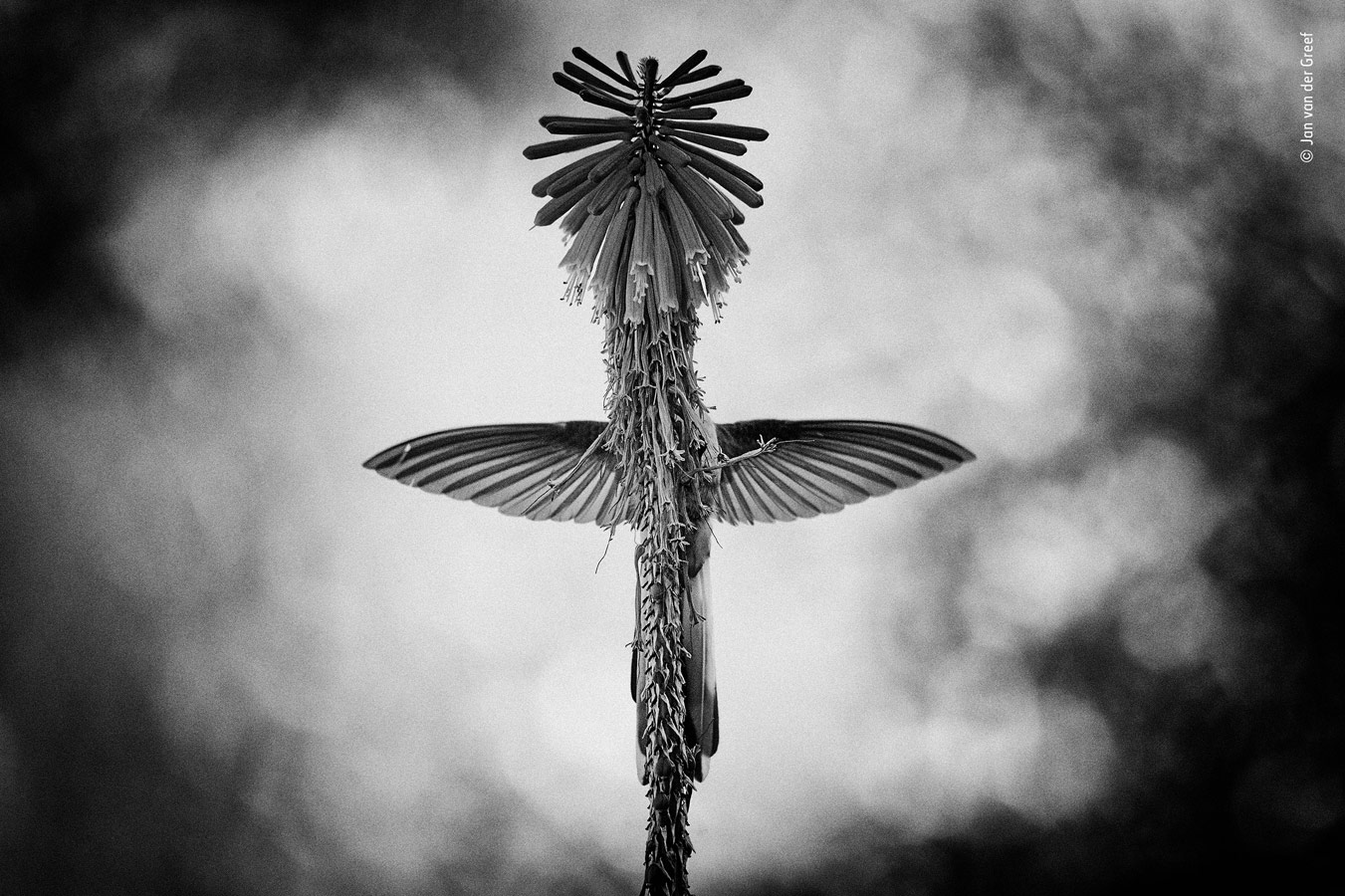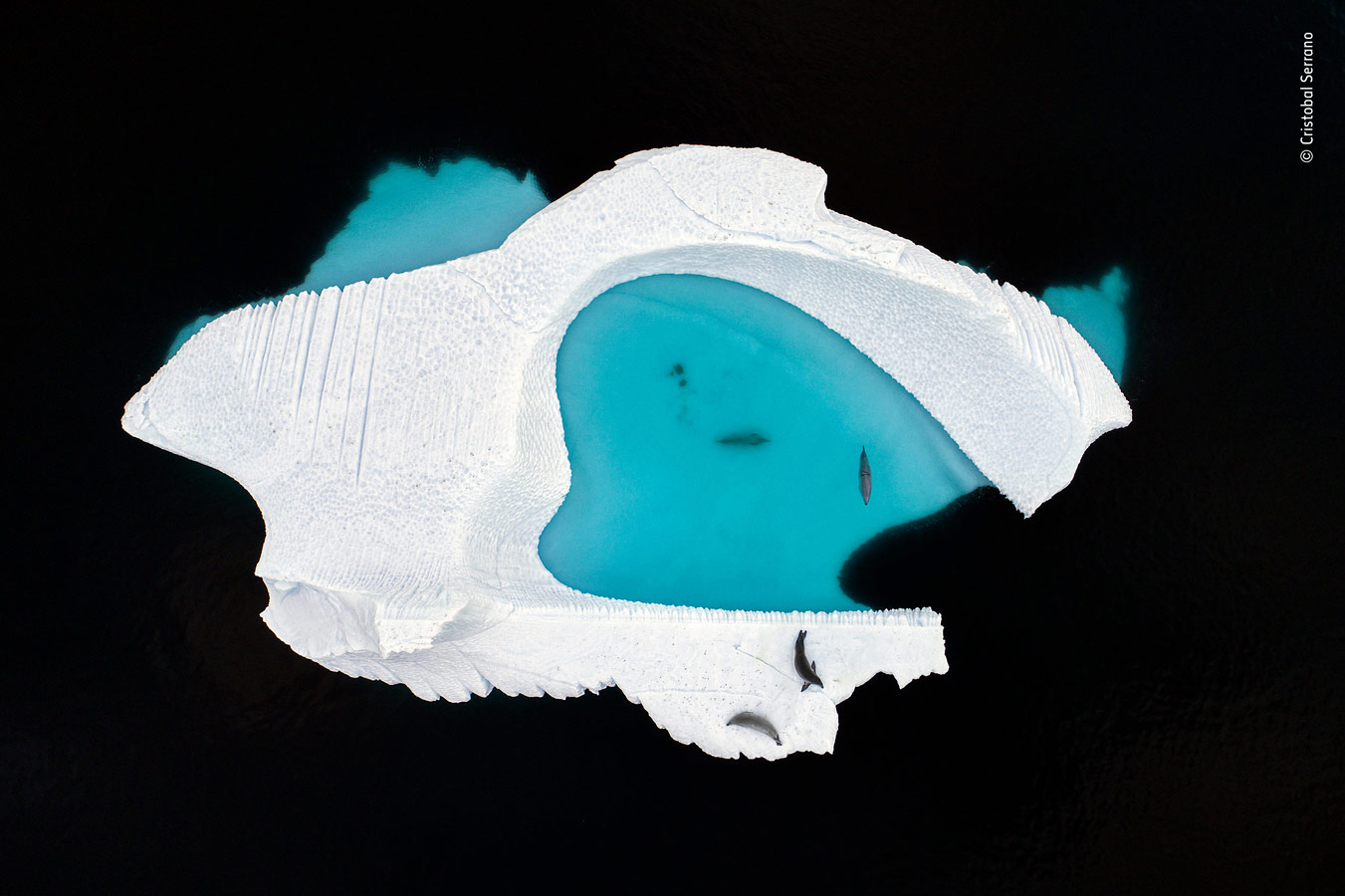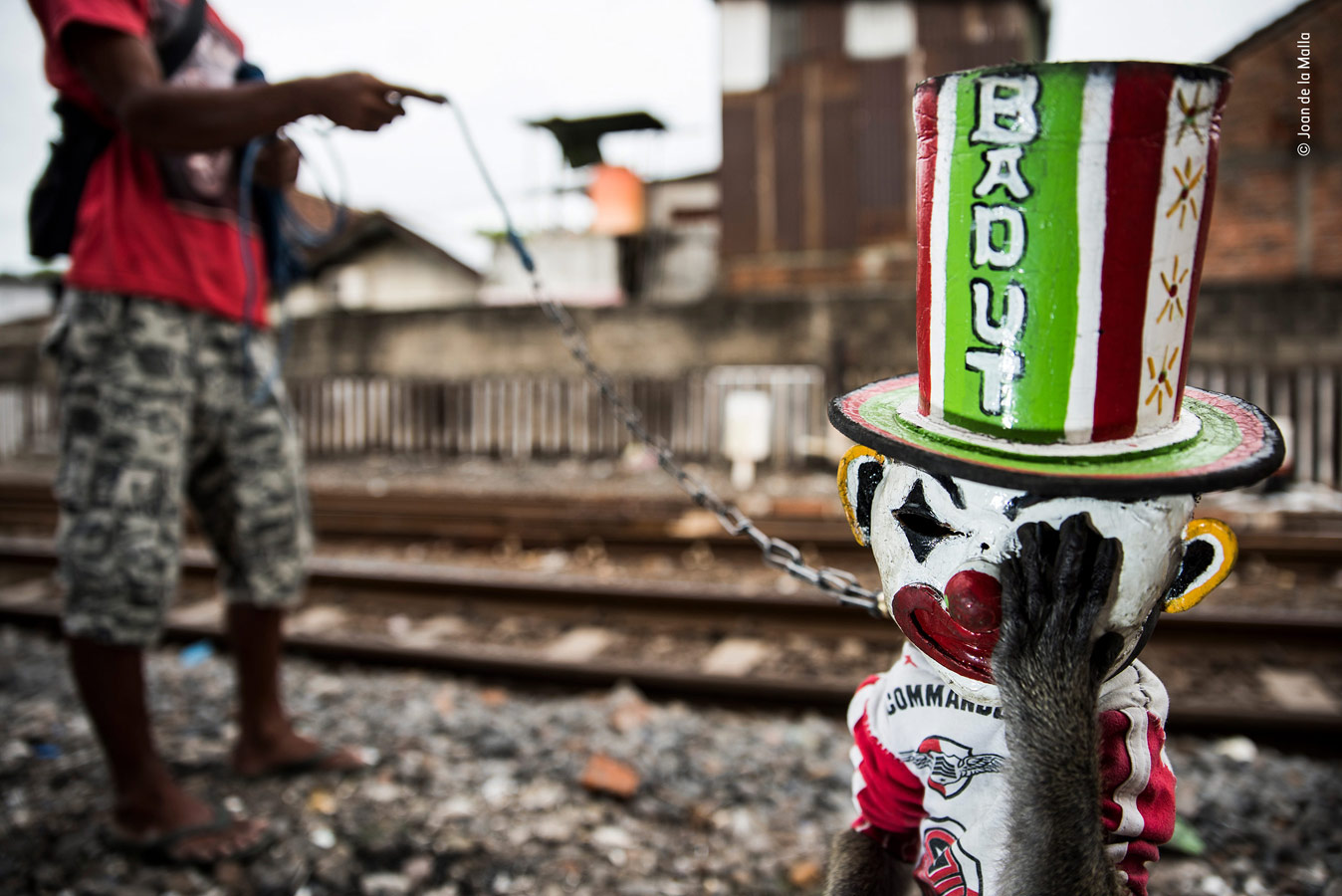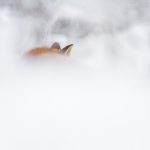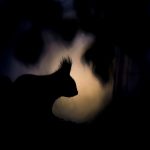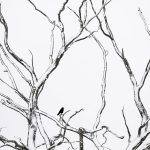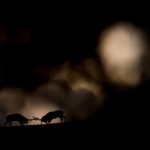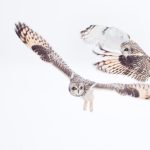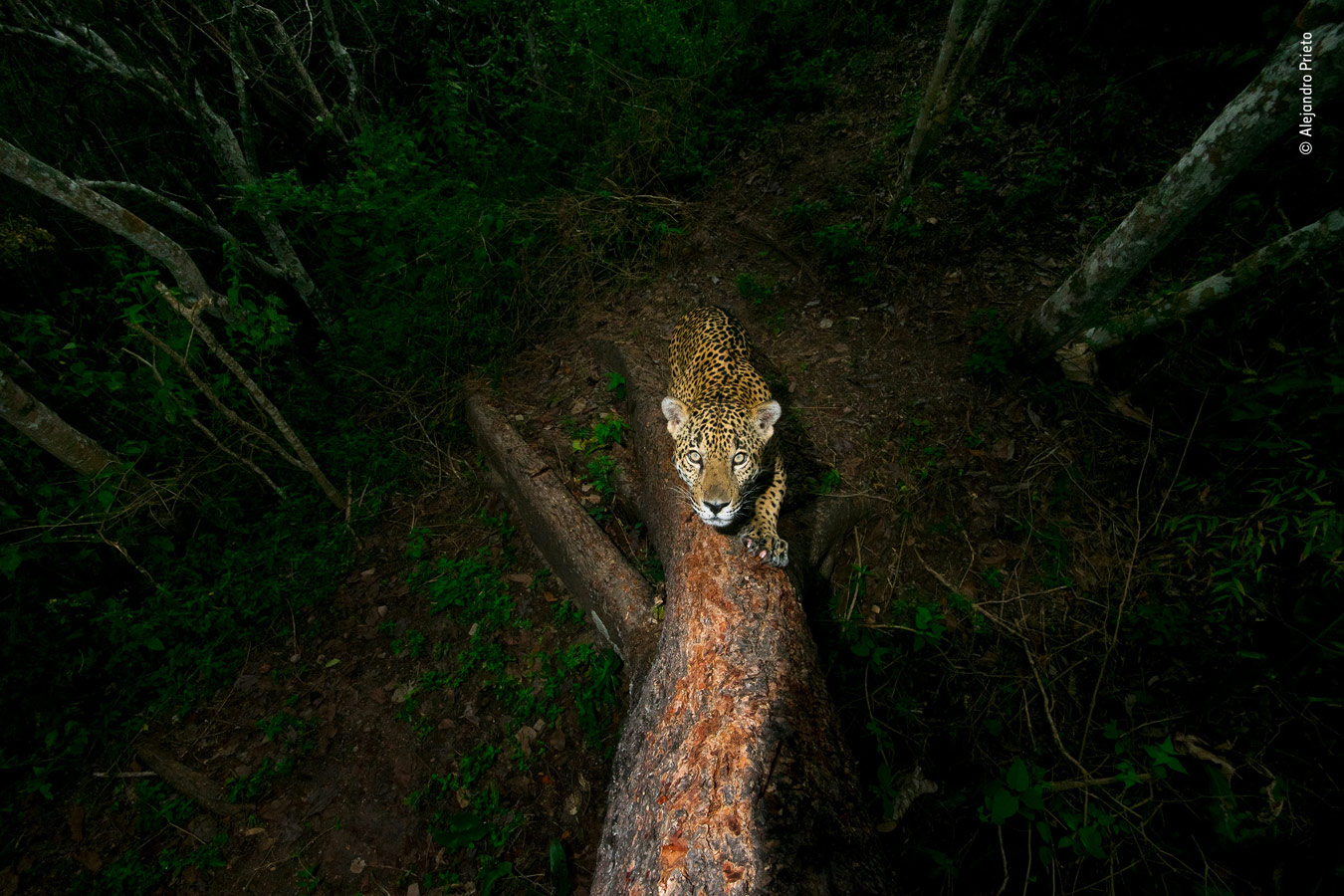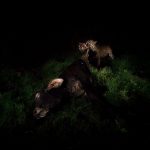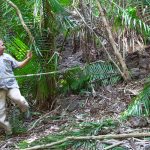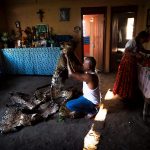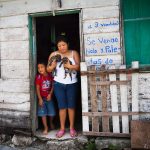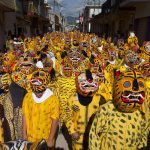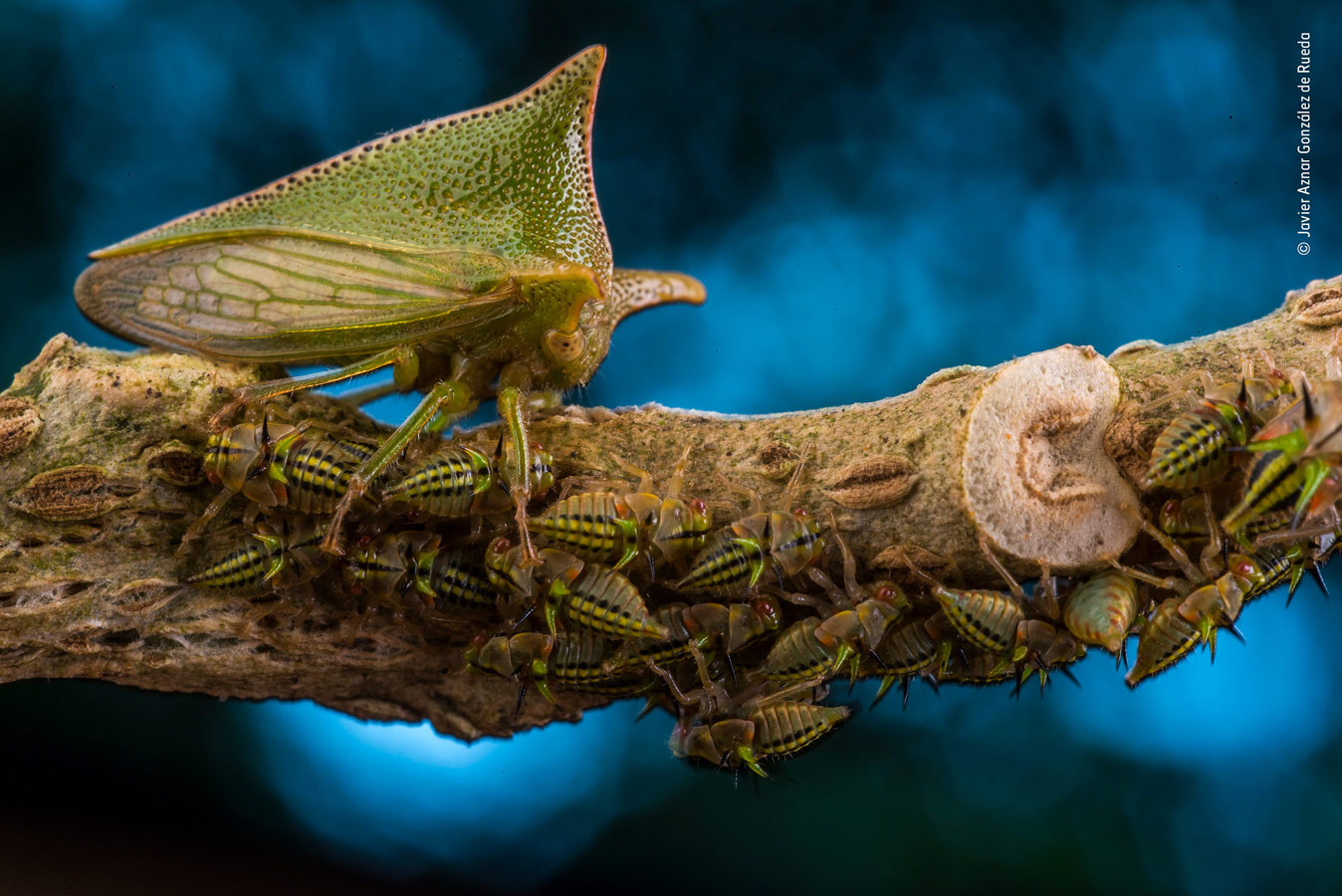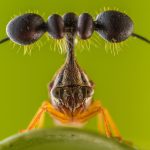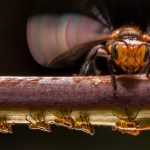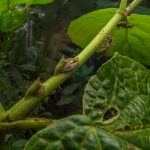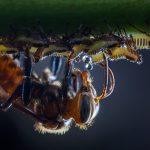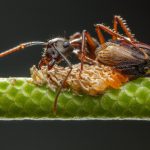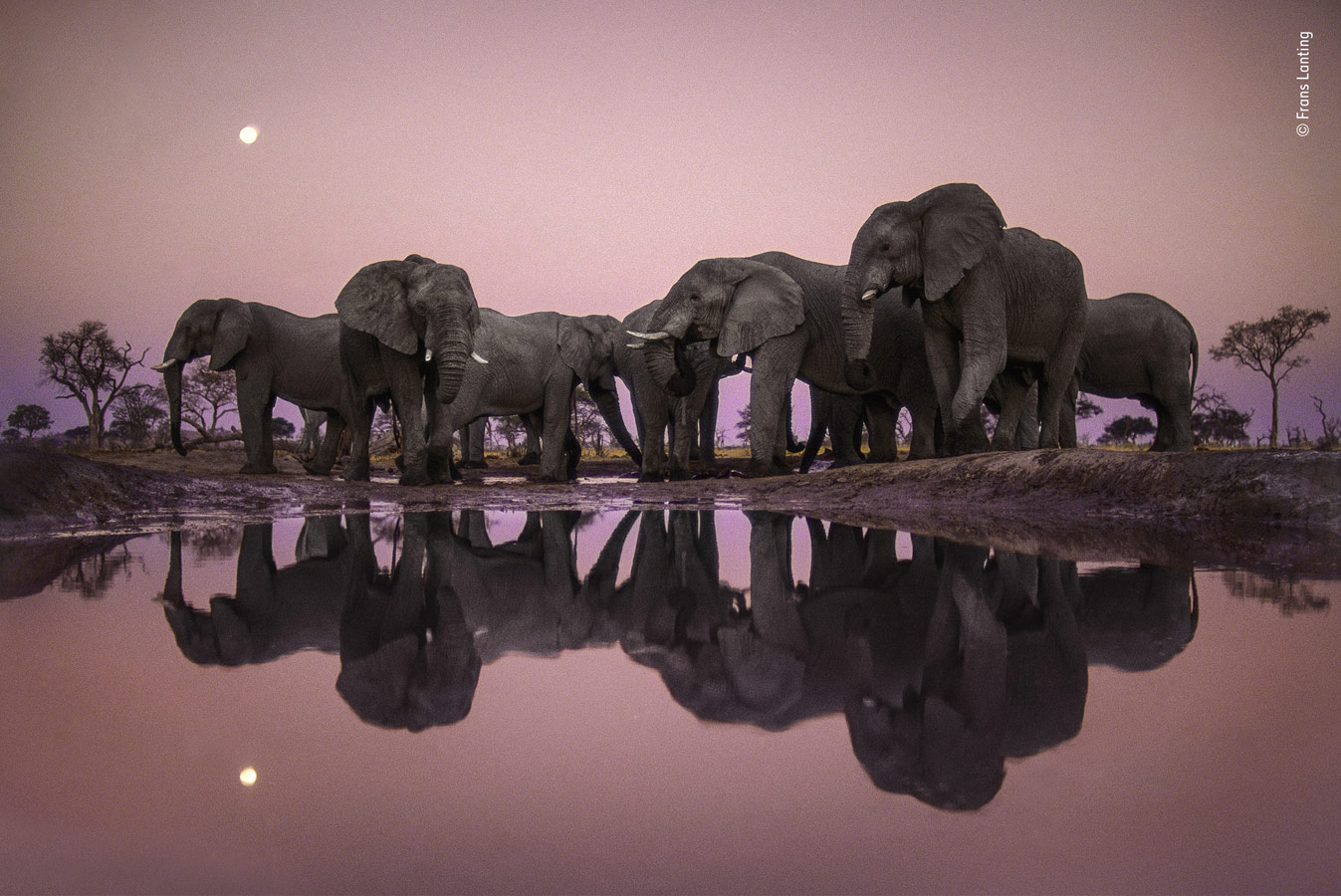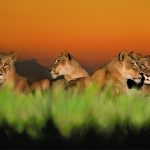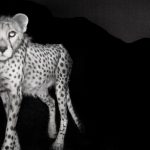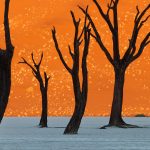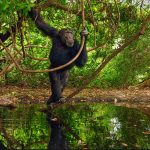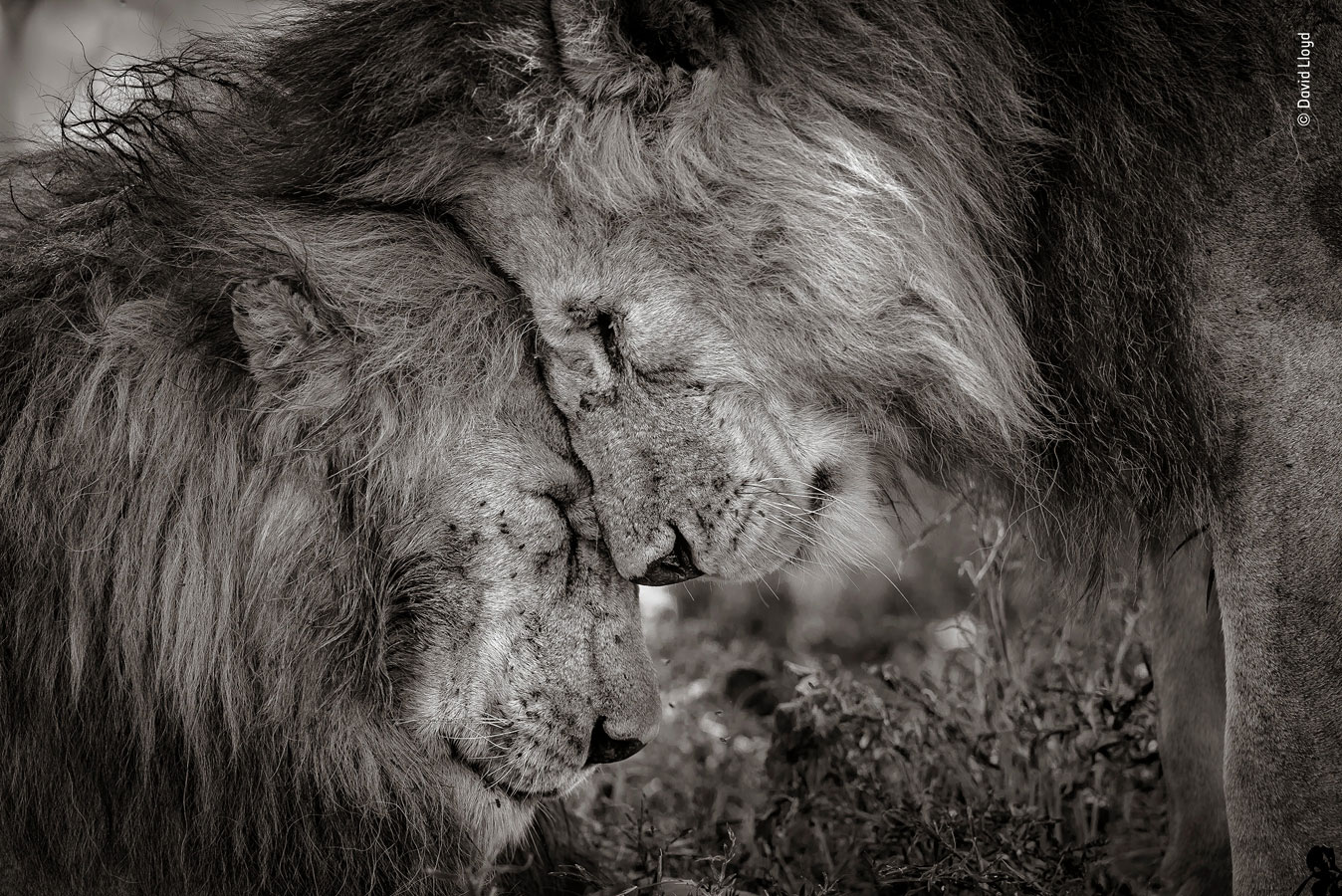Wildlife Photographer of the Year
Grand Title Winner
Animal Portraits Category Winner
The Golden Couple
© Marsel van Oosten, The Netherlands
As the group of Qinling golden snub-nosed monkeys jumped from tree to tree, Marsel struggled to keep up, slipping and stumbling over logs. Gradually he learned to predict their behaviour, and captured this male and female resting. With the Sun filtering through the canopy, they are bathed in a magical light, their golden hair glowing against the fresh greens of the forest.
This pair belongs to a subspecies of golden snub-nosed monkey restricted to the Qinling Mountains. Among the most striking primates in the world, these monkeys are in danger of disappearing. Their numbers have steadily declined over the decades and there are now fewer than 4,000 individuals left.
Young Wildlife Photographer of the Year 2018
Grand Title Winner
Lounging Leopard
© Skye Meaker, South Africa
Notoriously shy and elusive, the resident leopards of the Mashatu Game Reserve are hard to spot. But this time Skye was in luck. After tracking the leopards for a few hours, he came across Mathoja – a well-known female. In a fleeting moment, just before the leopard nodded off, Skye captured a peaceful portrait of this majestic creature.
Named by local guides, Mathoja means ‘the one that walks with a limp’ – a title given to her after a serious leg injury as a cub. Although her chances of survival were slim, Mathoja is now a healthy adult. She is one of the lucky ones – this species has been classed as vulnerable and many leopards are illegally hunted for their highly desirable skins.
Animals in Their Environment Category Winner
Bed of Seals
© Cristobal Serrano, Spain
The sea was relatively calm when Cristobal launched his drone from a small rubber dinghy in the Errera Channel of the Antarctic Peninsula. Rising above the sea, the drone revealed a small ice floe spilling over with crabeater seals. Part of the ice was splattered red with their excrement – the digested remains of their favourite food, krill.
Crabeater seals are gregarious, and if space allows they will cluster on ice floes in their hundreds. The seals are dependent on the ice – they rest and breed on top of it, but also feed on the krill that shelter underneath. As a result, a decline in sea ice not only strips these seals of places to haul themselves out of the water but also threatens the availability of their food supply.
Behaviours Amphibians and Reptiles Category Winner
Hellbent
© David Herasimtschuk, USA
Clamped in the jaws of a hungry hellbender salamander, things were not looking good for the northern water snake. But when its attacker repositioned its bite, the snake pushed free and escaped. David was thrilled to catch a battle between these two unlikely foes. ‘I’ve seen hellbenders display an array of behaviours, but this was by far the most remarkable,’ he says.
Hellbenders are the largest salamanders in the USA and are among the most endangered. Usually they hunt for small prey, such as crayfish, insects and eggs, so a northern water snake is an unexpected choice. These amphibians use suction to secure their prey before using their teeth – a method unlikely to subdue a wriggling snake.
Behaviours Birds Category Winner
Blood Thirsty
© Thomas P Peschak, Germany / South Africa
Working on a climate change story, Thomas had secured a rare permit to land on Wolf Island, a remote part of the Galápagos Islands. Scrambling over loose rocks to reach this plateau, he spied a bizarre scene – pecking away at the flight feathers of a Nazca booby was a sharp-beaked ground finch. With scarce food alternatives, it had resorted to drinking blood to survive.
Encircled by steep cliffs, with no permanent water and little rainfall, Wolf Island is a difficult place to live. While the boobies can fish in the ocean, the finches are limited to a scant supply of seeds and insects. To survive they drink the blood of the Nazca boobies – a behaviour that may have evolved from feeding on parasites in their feathers.
Behaviours Invertebrates Category Winner
Mud-Rolling Mud-Dauber
© Georgina Steytler, Australia
Georgina was at the waterhole early to photograph birds, but her attention was diverted to these industrious wasps. They were busy at the water’s edge, rolling the soft mud into balls and carrying them to their nearby nests. For a good angle, she lay in the mud, then pre-focused on a likely flight path and began shooting continuously.
The female mud-dauber wasps use the mud balls to build their nests. Collecting them into clusters, they then carve chambers inside the balls into which the females lay their eggs. Before closing each one up, the wasps insert the paralysed bodies of orb-weaving spiders as food for their larvae when they hatch.
Behaviours Mammals Category Winner
Kuhirwa Mourns Her Baby
© Ricardo Núñez Montero, Spain
Kuhirwa, a young female mountain gorilla, would not give up on her dead baby. Initially she cuddled and groomed the tiny corpse, carrying it piggyback like the other mothers. Weeks later, she started to eat what was left of it. Forced by the low light to work with a wide aperture and a narrow depth of field, Ricardo focused on the body rather than Kuhirwa’s face.
From elephants stroking the bones of deceased family members to dolphins trying to keep dead companions afloat, there is an abundance of credible evidence to show that animals visibly express grief. Kuhirwa’s initial actions can be interpreted as mourning, her behaviour showing the pain of a mother who has lost her child.
Plants and Fungi Category Winner
Desert Relic
© Jen Guyton, Germany / USA
Jen had trekked all day across the Namib Desert looking for the perfect welwitschia plant to photograph before finally spotting this ragged-leaved subject. Adopting a low, wide angle, she caught the plant’s architecture and vibrant tones against the expansive landscape, just as the Sun was going down. ‘It’s like something out of a Dr Seuss book,’ she says.
The weird and wonderful welwitschia plant can live for up to 1,000 years. Growing from the base, it is comprised of just two slow-growing leaves that creep over the desert throughout the lifetime of the plant. As the centuries take their toll, the leaf ends fray and split taking on the appearance of multiple leaves.
Under Water Category Winner
Night Flight
© Michael Patrick O’Neill, USA
Late one night, over deep water, Michael was following a flying fish. By day, they move extraordinarily fast, but at night they swim slowly just below the surface. He tried various shutter and flash settings, all the while keeping track of his small subject. ‘I wanted to create a sense of movement,’ he says.
By rapidly beating their forked tails, flying fish such as this juvenile propel themselves in the water until they take off at the surface. By holding their long, pointed pectoral fins out stiffly, they can glide in the air for several hundred metres, away from underwater predators.
Urban Wildlife Category Winner
Crossing Paths
© Marco Colombo, Italy
As Marco drove through the village late one evening he spotted a rare Marsican brown bear in the road. Immediately, he switched off his engine and lights so as not to disturb it, and watched as the bear strode across the street. With just seconds to spare he managed to photograph the female through the windscreen before it slipped into the shadows.
Marsican bears are an isolated and critically endangered sub-species of brown bear. With their habitat fragmented and threatened, they often come into contact with humans as they raid vegetable gardens and orchards to prepare for winter hibernation. Sadly on rare occasions humans poison them in retaliation.
Earth’s Environments Category Winner
Windsweep
© Orlando Fernandez Miranda, Spain
At the top of the dune, Orlando faced a trio of weather elements: a fierce northeasterly wind, warm afternoon sunshine and a dense ocean fog. Using the sharp ridge of sand in front of him as a focal point, he kept the sweep of dunes to his right in focus, leaving the distant coastal landscape, hidden behind a curtain of fog, a mystery.
A mix of fog and sunshine is not unusual on the Skeleton Coast. Cool winds from the Benguela Current – an ocean current that flows northwards – mix with the arid climate of the Namib Desert to create thick fog. The moisture from this fog spills inland and is vital to the survival of many plants and insects.
Black and White
The Vision
© Jan van der Greef, The Netherlands
From the garden of his hotel, Jan noticed that when the hummingbirds rotated around this plant’s spikes, and closed their tails for a moment, a beautiful cross appeared. From the low position of his wheelchair, it took him two half days to get the perfect shot, ‘their fast movements to me symbolise the freedom of our imagination,’ he says.
Endemic to Peru, the bearded mountaineer hummingbird spends its day feeding on sweet, nectar-rich plants. Unlike the hummingbird, the showy, dramatic torch lily seen here is not native to the region, but has become a popular food source for these hummingbirds. They are attracted by the delicious nectar of its bright red flowers.
Creative Visions Category Winner
The Ice Pool
© Cristobal Serrano, Spain
‘Humans have tried to master the art of sculpture, but icebergs show us we are no match for nature’s great design,’ explains Cristobal. To reveal the beauty of this spectacular ice carving, he used a low-noise drone, flying it high so as not to disturb the crabeater seals. The aerial viewpoint showed a heart-shaped pool in the iceberg’s centre.
Crabeater seals feed primarily from dusk to dawn, hauling out onto the ice around the middle of the day to rest. The clear blue area in this image is where the iceberg has melted away below the water line, creating a small and shallow pool, contrasted against the deep and dark ocean.
Wildlife Photojournalism Category Winner
The Sad Clown
© Joan de la Malla, Spain
Timbul, a long-tailed macaque, puts his hand to his face to try and relieve the discomfort of his mask, while being trained to stand upright for a street show. Sights such as this are common in Indonesia, and Joan spent a long time gaining the trust of the monkey’s owners. ‘They are not bad people,’ he says. Most are earning money to send their children to school.
Macaques like Timbul live in awful conditions, deprived of the social relationships they need to thrive. They work many hours, dancing and riding bikes, movements that are unnatural and uncomfortable. Animal charities are working to enforce legislation that makes it illegal to take young monkeys from the wild or to trade in them without a permit.
Rising Star Portfolio Award Winner
© Michel d’Oultremont, Belgium
Wildlife Photojournalist Award: Photo Story Category Winner
Gunning for the Jaguar
© Alejandro Prieto, Mexico
Alejandro’s photo story is a sensitive and thoughtful portrayal of the jaguars of Mexico and their enduring struggle to survive. Mexico’s jaguar population has declined dramatically since the beginning of the twentieth century, with fewer than 5,000 remaining. If the pattern continues, extinction is inevitable. Yet Alejandro still hopes there is time to change the jaguar’s story.
Jaguars are at constant risk from human activity where they live in South America and Mexico. These enigmatic animals are being assaulted from all sides – poaching, habitat loss, persecution and conflict with ranchers. The narrative can only change if humans stop and allow jaguars to make use of their extraordinary ability to adapt.
Wildlife Photographer Portfolio Award Winner
© Javier Aznar González de Rueda, Spain
Wildlife Photographer of the Year Lifetime Achievement Award Winner
© Frans Lanting, The Netherlands
Special Award: LUMIX People’s Choice Award Winner
Bond of Brothers
© David Lloyd, New Zealand / United Kingdom
These two adult males, probably brothers, greeted and rubbed faces for 30 seconds before settling down. Most people never have the opportunity to witness such animal sentience, and David was honoured to have experienced and captured such a moment.
Wildlife Photographer of the Year
Share:

